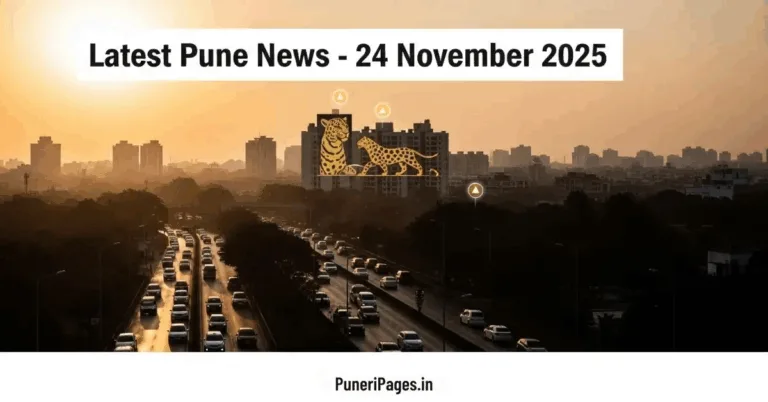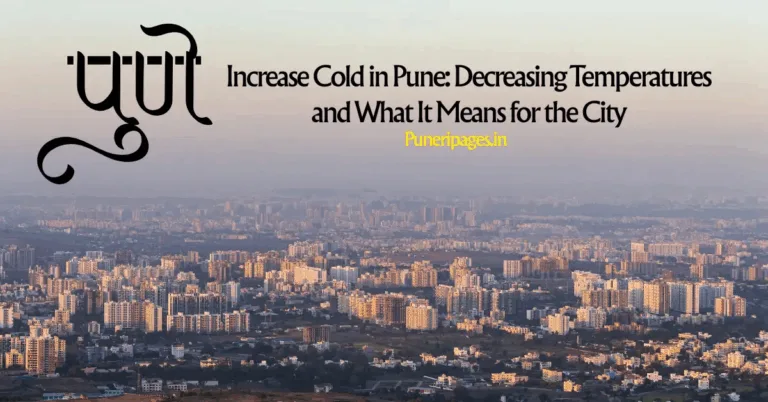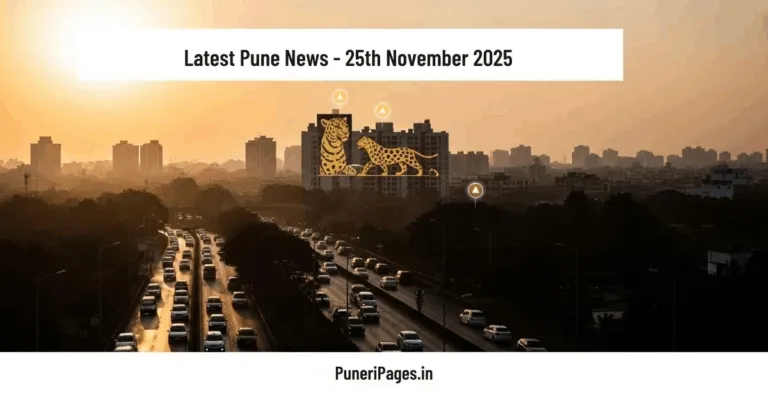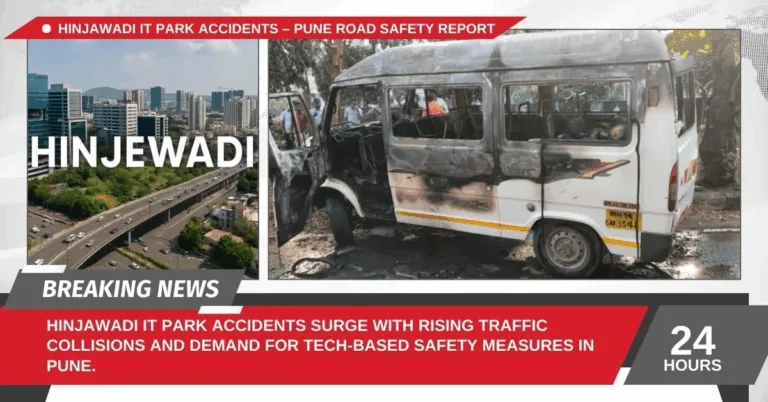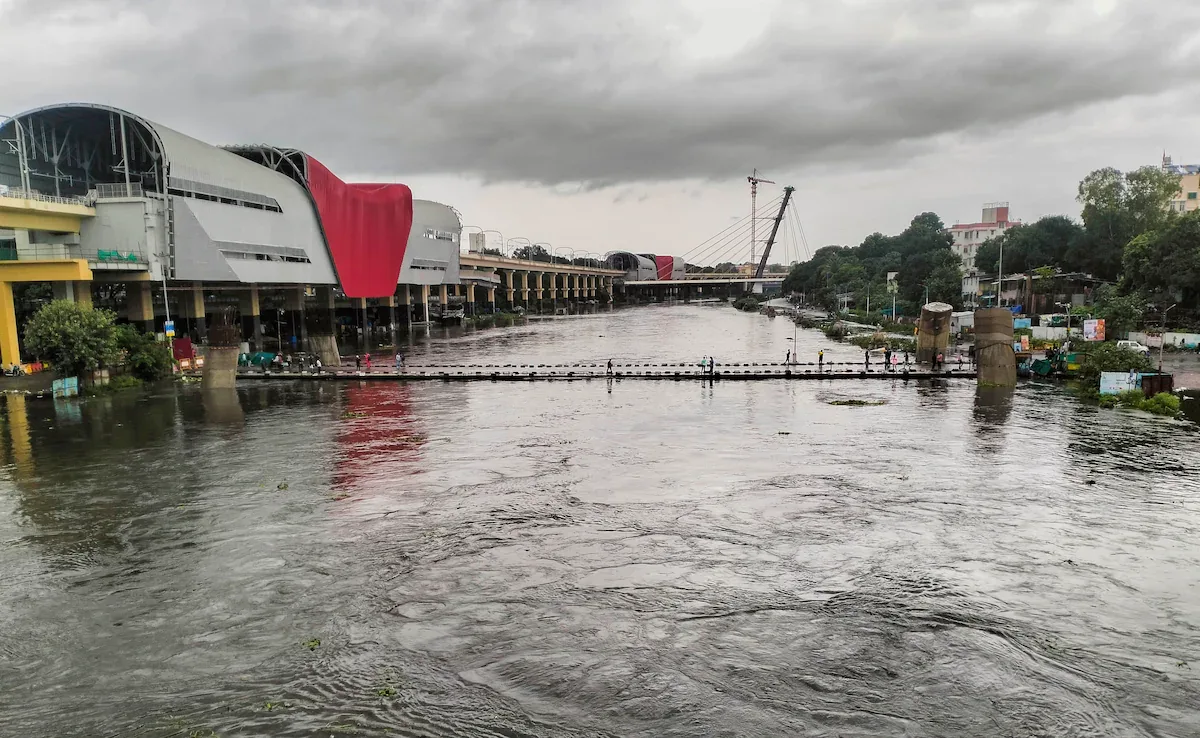
Cover image for the article on puneripages.in depicting the flooding of Pune Airport and surrounding Viman Nagar roads, highlighting the scale of the waterlogging crisis.
Pune Airport and the surrounding locality of Viman Nagar were hit hard by torrential pre-monsoon rains on May 18, 2025. The downpour resulted in widespread waterlogging, including runway flooding that disrupted airport operations and turned arterial roads into temporary streams. Commuters, residents, and local businesses bore the brunt, facing delayed flights, submerged streets, traffic paralysis, and extensive water damage. This blog provides a thorough analysis of the meteorological context, operational impact, resident challenges, emergency responses, and forward-looking strategies to enhance Pune’s urban flood resilience.
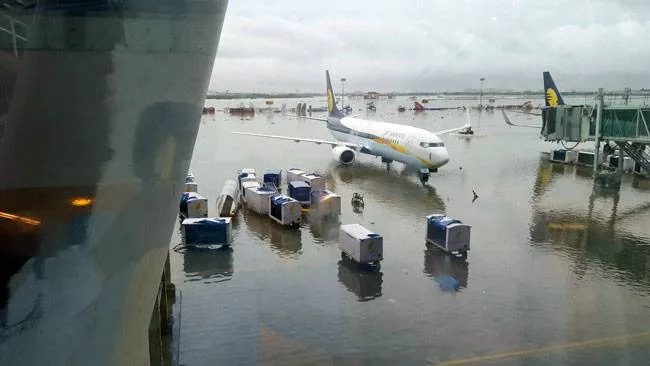
Table of Contents
1. Event Overview 📍🌧️
On the afternoon of May 18, Pune was drenched by relentless rainfall that exceeded historical mid-May averages. The airport’s runway became temporarily inoperable, suspending both landings and takeoffs. Several aircraft were left stranded, and terminals were swamped with frustrated passengers. Simultaneously, Viman Nagar’s roads—particularly around Symbiosis College, Clover Park, and Koregaon Park Road—were inundated, stalling traffic and trapping vehicles under rising water. Emergency response units, including PMC water removal teams and airport fire and rescue, were activated swiftly. However, the flooding underscored the region’s inadequate drainage and unpreparedness for climate extremes.
2. Meteorological Background 🌦️🔍
2.1 Pre-Monsoon Rainfall Spike
Pune received a staggering 78 mm of rainfall in just 24 hours, which is nearly four times the typical volume recorded in mid-May. Meteorological models attribute the extreme downpour to a confluence of a low-pressure trough over the eastern Arabian Sea and localized urban heat intensification. The clash of warm air with moist inflow from the sea triggered rapid convective activity, resulting in high-intensity precipitation bursts. Experts caution that such rainfall anomalies are becoming more common due to changing monsoon dynamics influenced by climate variability.
2.2 Urban Drainage Challenges
Viman Nagar, once a quiet residential suburb, has transformed rapidly over the last two decades into a high-density commercial-residential zone. Unfortunately, stormwater infrastructure has not kept pace. Most drains date back to the late 1990s, designed for much lower runoff levels. Neglect, encroachments, and construction debris routinely clog these channels. In the latest event, these bottlenecks caused backflow and water pooling even on elevated roads. Without an urgent upgrade, experts warn such occurrences may become routine.
3. Operational Disruptions & Passenger Impact ✈️
3.1 Flight Delays and Cancellations
More than 15 domestic flights faced delays ranging from 2 to 6 hours. At least three departures were canceled altogether. Ground staff struggled to assist due to partial power failures, weak mobile networks, and overwhelmed help desks. Baggage retrieval and boarding announcements were delayed, increasing chaos within terminals. Some incoming flights had to be diverted to Mumbai, affecting onward connections and passenger itineraries.
3.2 Ground Transportation Breakdown
Major roadways leading to and from the airport were submerged, rendering conventional transport modes ineffective. PMPML buses were rerouted or suspended. Ride-hailing apps experienced 3x surge pricing, and many drivers refused pickups. Commuters reported wading through ankle- to knee-deep water for over 1 km to reach arterial roads. Traffic police confirmed vehicular movement in Koregaon Park and Airport Road dropped by more than 60% during the evening rush.
4. Local Residents & Small Businesses Impact 💼
The impact extended well beyond the airport. Dozens of housing societies in Clover Park and Wadgaon Sheri reported basement and ground-floor flooding. Medical clinics, supermarkets, and electronics stores on Airport Road saw merchandise losses as water levels rose swiftly. Small eateries and tea stalls along the Nagar Road belt had to shut down during peak evening hours. Local vendors estimated collective revenue losses of ₹20,000–₹40,000 per vendor, with potential long-term repair costs to inventory, furniture, and electronics.
5. Response Measures & Mitigation Efforts 🛠️
- PMC Water Pump Deployment: Within 2 hours of rainfall peaking, the PMC deployed over 10 high-capacity diesel pumps across flooded zones, including Viman Nagar junction and Symbiosis Circle.
- Airport Rescue & Fire Services: Specialized trenching operations helped drain tarmac water. Temporary sandbag barriers were erected to prevent recirculation from roadside drains.
- Public Advisories: Citizens received timely alerts through PMC’s mobile app, Twitter handle, and local FM stations. Helplines were activated to assist travelers.
- Volunteer Initiatives: Youth groups and local NGOs like Clean Pune Green Pune mobilized sandbagging drives and assisted senior citizens trapped in residences with high water ingress.
6. Recommendations for Future Resilience 🔧
- Drainage Overhaul: Viman Nagar’s drainage network needs urgent expansion and real-time clog detection mechanisms. Public-private partnerships can fund this.
- Permeable Surfaces: Encourage the use of permeable pavements, green roofs, and bio-retention zones in commercial and residential development guidelines.
- Integrated Early Warning Systems: Real-time weather feeds must be synchronized with airport logistics, allowing for proactive flight reassignments and terminal resource planning.
- Community Flood Drills: PMC should initiate bi-annual simulation drills involving local societies, schools, and businesses to foster disaster preparedness.
